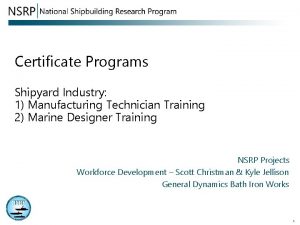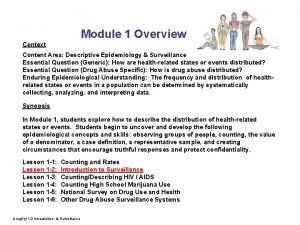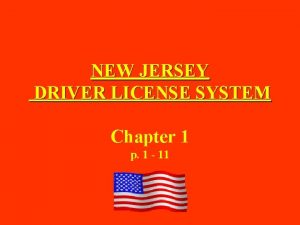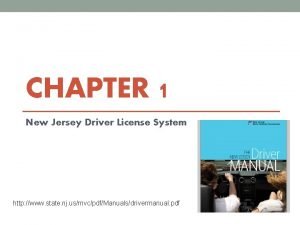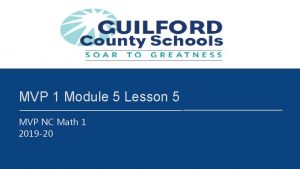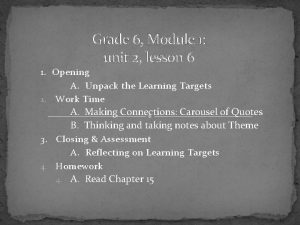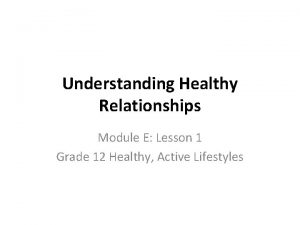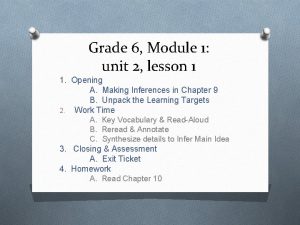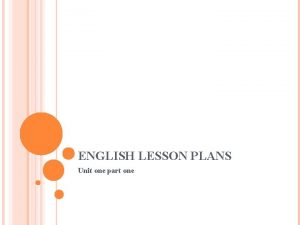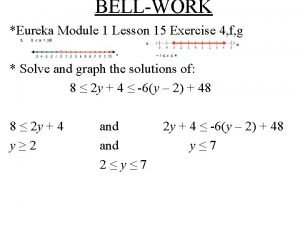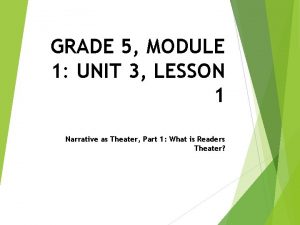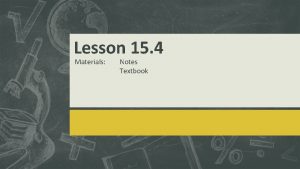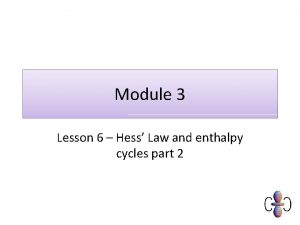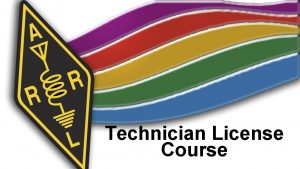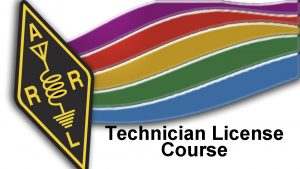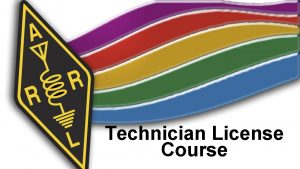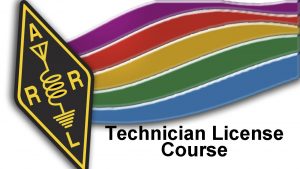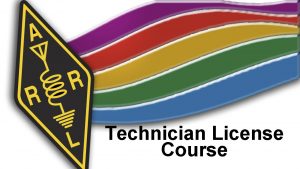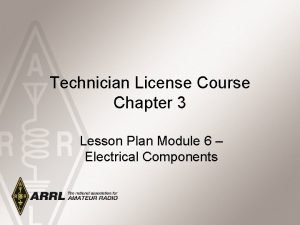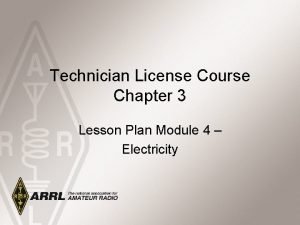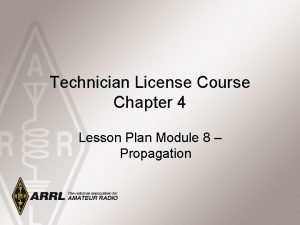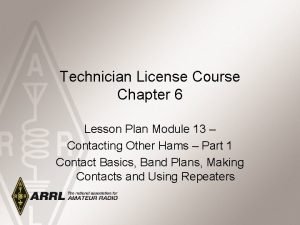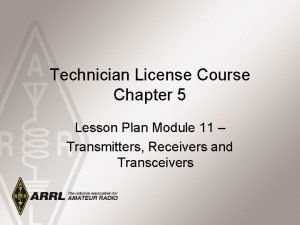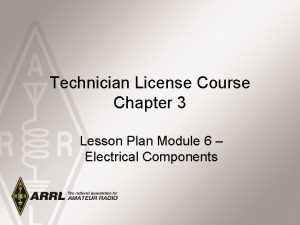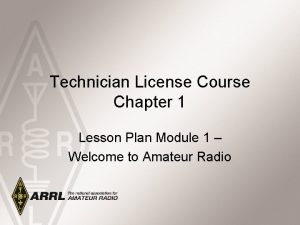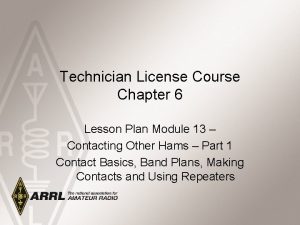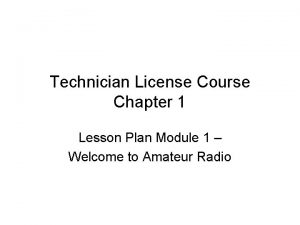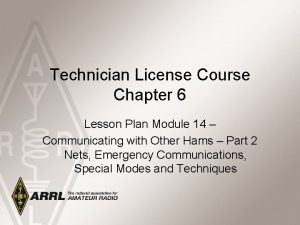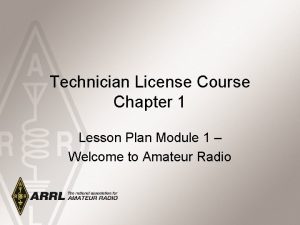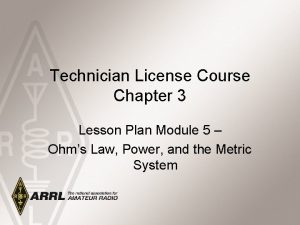Technician License Course Chapter 5 Lesson Plan Module
























- Slides: 24

Technician License Course Chapter 5 Lesson Plan Module 12 – Power Sources and RF Interference (RFI)

Power Supplies • Most modern radio equipment runs from 12 volts dc. • Actual preferred voltage is 13. 8 volts. • Household ac power is 120 volts ac. • Power supplies convert 120 volts ac to regulated, filtered dc. • If you use a lab-type 12 volt power supply, be sure it is adjustable to 13. 8 volts. 2014 Technician License Course

Types of Power Supplies • Linear: – Use iron transformers – Heavy (physically) – Do not emit RF, generally immune to strong RF • Switching: – Electronics instead of transformers – Lightweight and small – Can emit RF if not properly filtered – Check product reviews 2014 Technician License Course

Power Supply Ratings Voltage and Current • Continuous duty – how much current can be supplied continuously. • Intermittent duty – how much current can be supplied for short surges, such as on voice peaks. • Regulation – how well the power supply maintains a constant output voltage. 2014 Technician License Course

Mobile Power Wiring Safety • Car batteries hold lots of energy – shorting a battery could cause a fire. • Special requirements for safe car wiring: – Fuse both positive and negative leads. – Connect radio’s negative lead to negative terminal or engine block ground strap. – Use grommets or protective sleeves to protect wires. – Don’t assume all metal in the car is grounded; modern cars are as much plastic as metal. 2014 Technician License Course

Batteries • Create current through a chemical reaction – Individual cells connected in series or parallel – Cell chemistry determines voltage per cell • Battery types – Disposable (primary batteries) – Rechargeable (secondary batteries) – Storage • Energy capabilities rated in Ampere-hours – Amps X time (at a constant voltage) 2014 Technician License Course

Battery Charging • Some batteries can be recharged, some cannot. • Use the proper charger for the battery being charged. • Batteries will lose capacity with each cycle. • Best if batteries are maintained fully charged. – Over-charging will cause heating and could damage the battery. • Lead-acid batteries release explosive hydrogen during charging or rapid discharge so adequate ventilation is required. 2014 Technician License Course

Battery Charging • Automobiles can be a good emergency power source by recharging batteries • A 12 -volt lead-acid station battery can be recharged by connecting it to an automobile’s electrical system • Monitor battery temperature • Make sure battery is well-ventilated 2014 Technician License Course

Handheld Transceivers • Battery packs – packages of several individual rechargeable batteries connected together. – Ni. Cd (nickel-cadmium) – Ni. MH (nickel-metal hydride) – Li-ion (lithium-ion) • For emergencies, have a battery pack that can use disposable batteries (AA size). 2014 Technician License Course

Radio Frequency Interference (RFI) • Signals that interfere with radio reception. • Interference can be FROM your station or TO your station. • Solving the problem might take a little detective work! 2014 Technician License Course 10

Types of RFI • Direct detection – offending signals get into the electronic circuits to cause interference. • Overload – strong signal that overwhelms the ability of the receiver to reject it. • RF Current – can be picked up by cables of consumer equipment. • Transmitted harmonics – must be filtered out at the transmitter. 2014 Technician License Course

Filters • • • Filters attenuate (reduce) signals High-pass – reduce low-frequency signals Low-pass – reduce high-frequency signals Band-pass – only pass a range of signals Notch – reduces a narrow range of signals Selecting correct filter requires understanding the source of the interference 2014 Technician License Course

Ferrite Chokes • Creates impedance (opposition to ac) on cables and wires. • Can be used to block RF current that causes interference to entertainment equipment, microphones, monitors, amplifiers, etc. • Wind cable through ferrite core to create blocking impedance. 2014 Technician License Course

Cable TV Interference • Usually the result of broken shielding somewhere in the cable. – Loose connections – Broken connections – Corroded connections • Usually solved by proper cable maintenance by cable supplier. 2014 Technician License Course

Noise Sources • Electrical arcs (motors, thermostats, electric fences, neon signs) • Power lines • Motor vehicle ignitions or alternators • Switching power supplies • Computers, networks and TV sets 2014 Technician License Course

RFI Guidelines • Operate your equipment properly. • Eliminate interference in your own home. • Use good station building practices to eliminate unwanted signals. • Shielded wire and cables • Shielded equipment • Good connections and filters 2014 Technician License Course

Dealing with RFI • Take interference complaints seriously. • Make sure that you’re really not the cause (demonstrate that you don’t interfere within your own home). • Offer to help eliminate the RFI, even if you are not at fault. • Consult ARRL RFI Resources for help and assistance. 2014 Technician License Course

Part 15 Rules • Applies only to unlicensed devices • Unlicensed devices may not interfere with licensed services, such as amateur radio • Unlicensed devices must accept any interference they receive from licensed services • RFI from and to unlicensed devices is the responsibility of the users of such devices 2014 Technician License Course

What the Rules Say • Bottom line – If your station is operating properly, you are protected against interference complaints • BUT – Be a good neighbor because they are probably not familiar with Part 15 rules and regulations 2014 Technician License Course

Electrical Safety Grounding and Circuit Protection (in the Home) • Make sure your home is “up to code. ” • Most ham equipment does not require special wiring or circuits. – Use 3 -wire power cords. – Use circuit breakers, circuit breaker outlets, or Ground Fault Interrupter (GFI) circuit breakers. – Use proper fuse or circuit breaker size. – Don’t overload single outlets. 2014 Technician License Course 20

RF “Grounding” • Not the same as ac safety grounding • “Bonding” is more accurate • Keep all equipment at the same RF voltage • Current will not flow between pieces of equipment which can cause RF feedback • Minimizes RF “hot spots” (RF burns) • Use solid strap or wire for best RF connection 2014 Technician License Course

Practice Questions 2014 Technician License Course

Which of the following actions should you take if a neighbor tells you that your station’s transmissions are interfering with their radio or TV reception? A. Make sure that your station is functioning properly and that it does not cause interference to your own radio or television when it is tuned to the same channel B. Immediately turn off your transmitter and contact the nearest FCC office for assistance C. Tell them that your license gives you the right to transmit and nothing can be done to reduce the interference D. Install a harmonic doubler on the output of your transmitter and tune it until the interference is eliminated T 7 B 06 HRLM (5 -22) 2014 Technician License Course

Which of the following actions should you take if a neighbor tells you that your station’s transmissions are interfering with their radio or TV reception? A. Make sure that your station is functioning properly and that it does not cause interference to your own radio or television when it is tuned to the same channel B. Immediately turn off your transmitter and contact the nearest FCC office for assistance C. Tell them that your license gives you the right to transmit and nothing can be done to reduce the interference D. Install a harmonic doubler on the output of your transmitter and tune it until the interference is eliminated T 7 B 06 HRLM (5 -22) 2014 Technician License Course
 Manufacturing technician license
Manufacturing technician license Manufacturing tech license
Manufacturing tech license Micro teach lesson plan example
Micro teach lesson plan example C device module module 1
C device module module 1 Hse culture ladder
Hse culture ladder Course module sample
Course module sample A gift of chappals learning outcomes
A gift of chappals learning outcomes Building with bricks
Building with bricks Course title and course number
Course title and course number Chaine parallèle muscle
Chaine parallèle muscle Applying for a driver’s license illegally may result in:
Applying for a driver’s license illegally may result in: Chapter 1 the new jersey driver license system answers
Chapter 1 the new jersey driver license system answers Chapter 1 the new jersey driver license system answers
Chapter 1 the new jersey driver license system answers Chapter 1 lesson 1 your total health
Chapter 1 lesson 1 your total health Lesson 3 a new plan of government answer key
Lesson 3 a new plan of government answer key The great depression lesson 2 hardship and suffering
The great depression lesson 2 hardship and suffering Module 5 lesson 5
Module 5 lesson 5 Grade 8 module 1 unit 1 lesson 6 answer key
Grade 8 module 1 unit 1 lesson 6 answer key Practical/logistical issues in relationships examples
Practical/logistical issues in relationships examples Grade 6 module
Grade 6 module Module eleven lesson one self check quiz
Module eleven lesson one self check quiz Eureka math algebra 1 module 1 lesson 15
Eureka math algebra 1 module 1 lesson 15 Grade 5 module 1 lesson 1
Grade 5 module 1 lesson 1 Module 15 angles and segments in circles
Module 15 angles and segments in circles Module 3 lesson 6
Module 3 lesson 6
